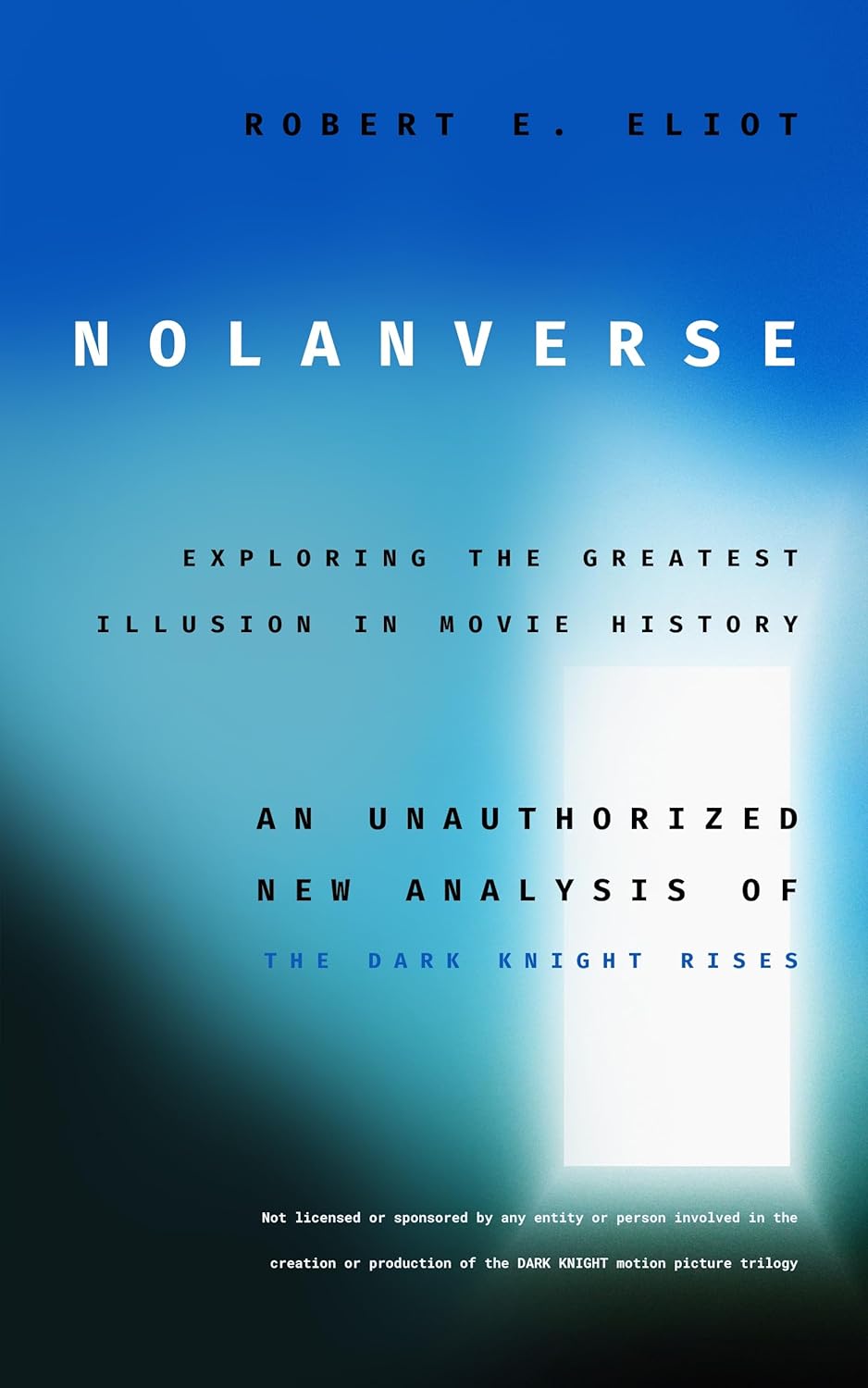Title: Nolanverse: Exploring the Greatest Illusion in Movie History
Author: Robert E. Eliot
For fans of Director Christopher Nolan’s The Dark Knight Trilogy, there’s no short supply of debate, analysis, and picking-apart of meanings, themes, and ideas in the trio of Bat-films. Though Batman Begins and The Dark Knight earn much reverence from filmgoing audiences and Bat-fans alike, The Dark Knight Rises is sometimes viewed as the messy, third child. Some viewers dislike others. Others enjoy it, despite imperfections in plotting, pacing, and awkward moments (I’m thinking of the bizarre Talia al Ghul death scene here). Author Robert E. Eliot, however, has gone above and beyond his analysis of The Dark Knight Rises with his book Nolanverse: Exploring the Greatest Illusion in Movie History.
This self-ascribed “unauthorized analysis” is hard to describe without spoiling bits and pieces of Eliot’s argument. That said, it’s rich in detail and exhaustively researched. Anyone who reads this can tell that Eliot clearly poured his heart and soul into revisiting and making a case for The Dark Knight Rises. Furthermore, in his exploration of both Christopher Nolan and his brother, Jonathan Nolan, Eliot inadvertently offers up a canvas that dives into the science fiction-leaning fantasies of both artists.
In Nolanverse, Eliot makes a case for what he believes is the true meaning behind the ending of the film, and it’s definitely not one fans have seen on forums or in public debate. Eliot’s take is unique, blending in everything known about the Nolan brothers and their narrative proclivities, serving up a 160+ page pitch that, whether one agrees or disagrees, is fun to think about.
More Than Just a Film Analysis
As I mentioned earlier, Eliot has gone above and beyond an analysis. More than just an argument for the ending of The Dark Knight Rises, Nolanverse is a lens into Christopher and Jonathan Nolan. It exhaustively digs into their works, both as brothers and partners as well as solo artists. Eliot explores their mentors and inspirations and notes common themes across both of their other works. While Nolanverse is centered around finding the true ending of The Dark Knight Rises, in many ways it makes the case for the brilliance of the brothers, paving the way for an argument as to how these two have studied genre filmmaking and expanded upon it, pushing the envelope of moviemaking further with their interests, styles, and fixations.
As a Batman fan, I sit on the fence with whether I agree or disagree with the conceit of the film’s ending. It’s a lot to digest, and I’m firmly of the mind that the true ending doesn’t necessarily matter, as the theme and idea of what Batman means, which is clearly laid out across the trilogy, is the most important. However, as a lover of cinema, I respect and appreciate the effort Eliot has put into Nolanverse. Throughout the book, I found myself enthralled with the common themes and ideas Eliot uncovered in his deep-dive into Christopher and Jonathan Nolan. I especially appreciate how Eliot makes a clear distinction between traditional science fiction and the type of science fiction elements the Nolan brothers incorporate into their works.
Ultimately, I went into this book expecting a breakdown of The Dark Knight Rises. I came out thinking about the fascinating intersection of physics and time that has interwoven itself in many of Nolan’s hit films, including Tenet and Interstellar.
Readers can find Nolanverse on Amazon, and for more insight into the book, listen to our Interview with Robert E. Eliot.
